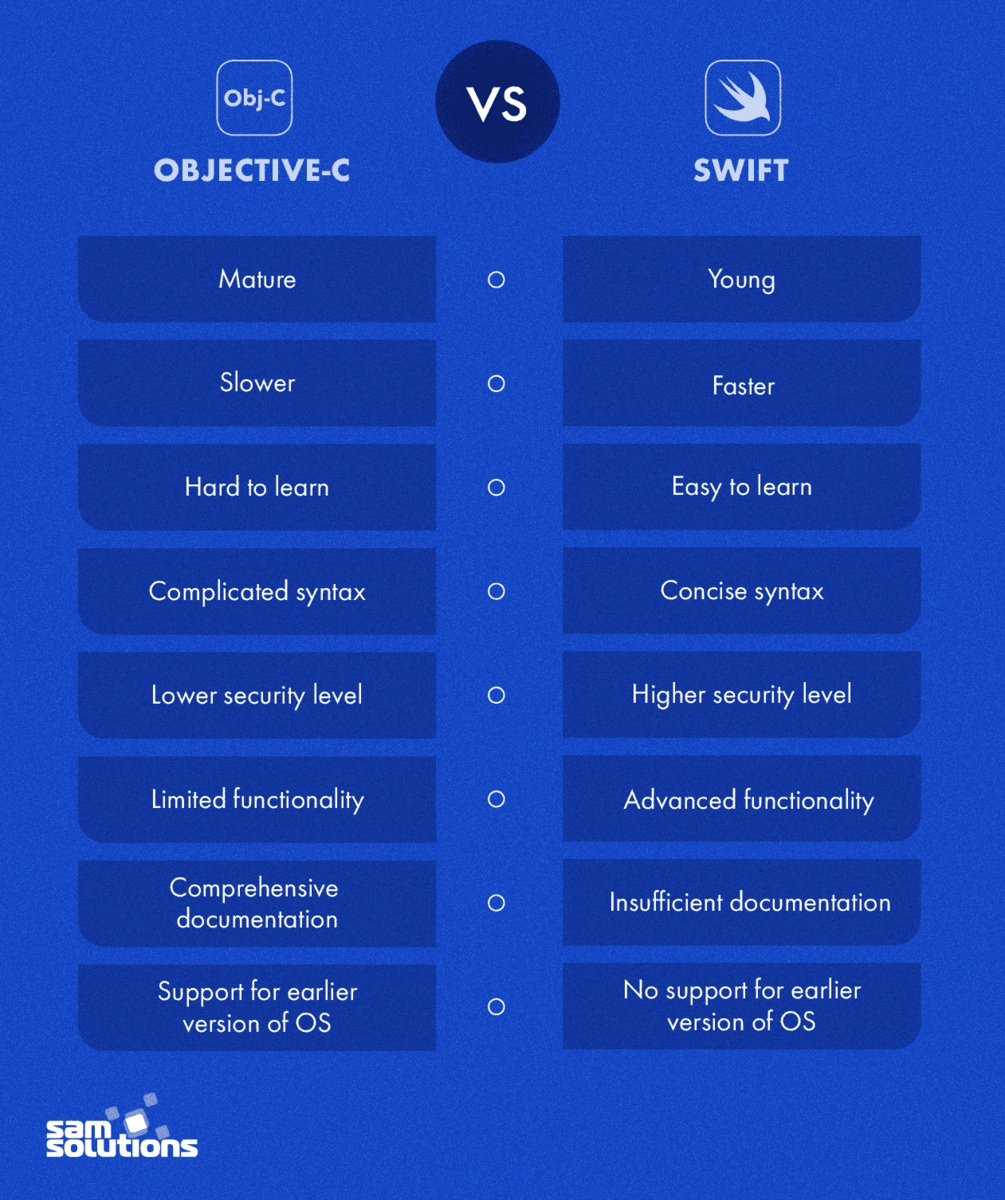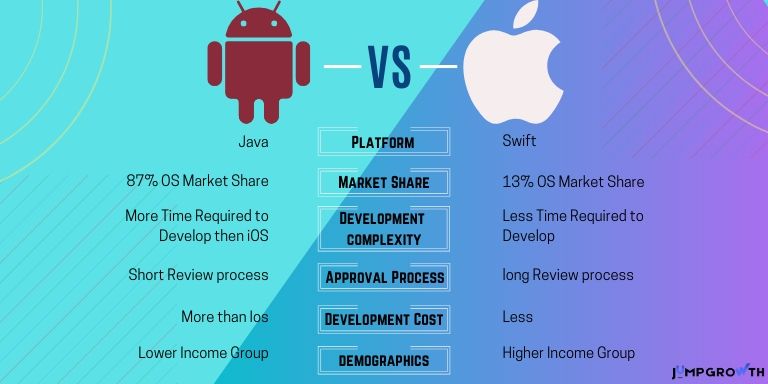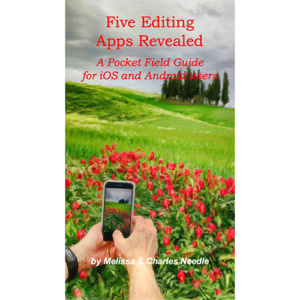Their development environments and operating systems are the main distinctions between apps for iOS and Android. Android apps are created with Java or Kotlin, whereas iOS apps are created with Swift or Objective-C.
The user experience and app development are impacted by the notable distinctions between the two popular mobile operating systems, iOS and Android. With its closed-source design, IOS is only available on Apple devices, guaranteeing a consistent and simplified user experience. Conversely, Android is available for free and runs on a variety of devices thanks to its open-source nature.
This openness promotes diversity in the environment but may also cause problems with fragmentation. While Android developers have difficulties because of the range of devices and OS versions, iOS developers enjoy a more regulated environment. Selecting the best platform for app development requires an understanding of these distinctions.
Introduction To Mobile Ecosystems
The mobile app industry has grown tremendously. Two main players dominate this market: iOS and Android. These operating systems power most smartphones globally. Understanding their differences helps developers and users make informed choices.
The Ascent of Android And IOS
In 2007, Apple introduced iOS together with the original iPhone. It provided a flawless encounter. Users praised its security and ease of use. In 2008, Google released Android. It sought to be adaptable and personalised. Both ecosystems saw a tremendous increase in popularity.
Nowadays, the mobile market is nearly evenly split between iOS and Android. Every one has a devoted user base. Developers have to make decisions between them all the time. Making the best choice is aided by being aware of their past.
Key Factors Driving App Development
Various factors influence app development for iOS and Android. Here are the key points:
- Development Language: iOS uses Swift, while Android uses Java/Kotlin.
- Development Tools: iOS developers use Xcode; Android developers use Android Studio.
- Market Reach: iOS apps target higher-income users; Android apps reach a broader audience.
- Customization: Android offers more customization, iOS provides a uniform experience.
Choosing the right platform depends on your target audience and business goals. Each has its own set of advantages and challenges.
| Factor | iOS | Android |
|---|---|---|
| Development Language | Swift | Java/Kotlin |
| Development Tools | Xcode | Android Studio |
| Market Reach | High-income users | Broad audience |
| Customization | Uniform experience | High customization |

Credit: designial.com
Design Philosophy: Ios Vs Android
There are major differences in the design philosophies of iOS and Android apps. Users’ interactions with each platform are influenced by these variations. It is easier to create better user experiences when one is aware of these design concepts. Two important topics will be covered in detail in this section: visual aesthetics and navigation styles.
Styles of Navigation
Android and iOS have different navigational styles. Apple prioritises usability and simplicity. A tab bar at the bottom of the screen is a common feature of iOS apps. The primary sections of the app are easily accessible through this tab bar.
Android, on the other hand, employs a bottom navigation bar or a navigation drawer. From the side, the navigation drawer slides in. It provides users with a list of options to select from. There is more room for customisation with this method.
| Feature | iOS | Android |
|---|---|---|
| Primary Navigation | Tab Bar | Navigation Drawer |
| Secondary Navigation | Navigation Bar | Bottom Navigation Bar |
Visual Appeal
Additionally, iOS and Android have quite different visual styles. Apple places a strong emphasis on a unified, tidy aesthetic. iOS apps frequently have a simple layout with lots of white space. There’s a slick, contemporary vibe to this design decision.
Since Android is open-source, more customisation is possible. Developers are able to produce distinctive designs for their brands. An important component of Android’s visual design is Material Design. It emphasises grid-based layouts, vibrant colours, and responsive animations.
- iOS: Apps have a unified, minimalistic appearance.
- Android: Material Design concepts, bright colours, and customisable.
Each platform has advantages and disadvantages. Selecting the best strategy for app development is aided by having a thorough understanding of these design concepts. Though in various ways, the goal of every platform is to offer the best possible user experience.
Development Languages And Tools
The development languages and tools for iOS and Android apps differ greatly. These differences affect how developers build and maintain the apps. Understanding the key languages and tools used can help you grasp the core distinctions.
For iOS, Swift and Objective-C
The two main languages used for developing iOS apps are Swift and Objective-C. 2014 saw Apple release Swift, a contemporary language. It has a simple syntax and is simple to understand. Swift is favoured among developers due to its ability to simplify code.
iOS applications are written in the antiquated language Objective-C. Prior to Swift’s arrival, it served as the primary language. Some older apps continue to utilise Objective-C. For improved readability and performance, many developers switch from Objective-C to Swift.
Kotlin and Java for Android
The two primary languages used to construct Android apps are Java and Kotlin. Since the beginning of Android, Java has been the conventional option. It is a powerful object-oriented language with a sizable development community.
Google has officially endorsed Kotlin, a more recent language developed by JetBrains, for Android development. Boilerplate code is reduced and is concise in Kotlin. Since it is completely compatible with Java, implementing it in already-existing projects will be simpler.
Comparison Table
| iOS | Android |
|---|---|
| Swift | Java |
| Objective-C | Kotlin |
Development Tools
- Xcode: The integrated development environment (IDE) for iOS apps.
- Android Studio: The official IDE for Android apps.
Both platforms offer robust tools for building and debugging apps. Xcode is optimized for Apple’s hardware. Android Studio is versatile and supports a wide range of devices.

Credit: decode.agency
Customization And User Experience
Choosing between Android and iOS can be challenging. Both have unique features that appeal to different users. One critical aspect to consider is the customization and user experience each platform offers. Let’s dive into the specifics.
Android’s Open Environment
Android is renowned for its open-source nature. This allows for extensive customization options. Users can change almost every aspect of their device’s interface.
- Change themes and icons
- Install third-party apps
- Modify system settings
This flexibility caters to users who enjoy personalizing their device. Developers also benefit from Android’s open environment. They can create apps that offer unique functionalities unavailable on iOS.
Ios’s Streamlined Interface
iOS, developed by Apple, offers a streamlined and consistent user experience. The interface is intuitive and easy to navigate. This consistency is a hallmark of iOS.
Apple controls both the hardware and software. This ensures that the user experience is uniform across all devices. Apps on iOS often have a polished look, with strict guidelines for design and functionality.
- Smooth animations
- Consistent app design
- Seamless integration with other Apple products
This approach appeals to users who prefer a straightforward and reliable experience. Developers find it easier to create apps with a predictable performance on iOS.
App Availability And Ecosystem
App availability and ecosystem play a crucial role in deciding between iOS and Android apps. Both platforms offer unique experiences, but there are key differences in app exclusivity and the role of app stores. Understanding these differences can help users and developers choose the right platform.
Exclusive Apps On Ios And Android
Both iOS and Android have exclusive apps that are not available on the other platform. These exclusive apps can influence a user’s choice of operating system.
| iOS Exclusive Apps | Android Exclusive Apps |
|---|---|
| GarageBand | Tasker |
| iMovie | Torque Pro |
| FaceTime | Nova Launcher |
iOS users benefit from Apple’s high-quality, polished apps designed for creativity and productivity. On the other hand, Android users enjoy customization-focused apps that enhance device functionality.
The Role Of App Stores
Both platforms’ app stores have a big impact on the availability of apps and user experience. There are distinct policies and ecosystems for the Google Play Store and the Apple App Store.
- Apple App Store: is renowned for its rigorous approval procedure. guarantees safe and reliable apps.
- Google Play Store: Provides an easier way to submit content. permits a greater range of applications, including test versions.
There is more regulation in the Apple App Store. This frequently leads to fewer, better-quality apps. With its greater openness, the Google Play Store offers a huge selection of apps. This covers both innovative and top-notch applications.
Overall, exclusive apps and the distinct functions of each app store cause the disparities in the ecosystems and app availability between iOS and Android. Recognising these aspects helps users make informed choices based on their needs and preferences.

Credit: jumpgrowth.com
Performance And Security
Performance and security are crucial aspects of mobile apps. Both iOS and Android have unique strengths and weaknesses. Understanding these can help developers and users make informed decisions.
Comparing System Updates
System updates play a vital role in app performance and security. iOS and Android handle these updates differently.
| Aspect | iOS | Android |
|---|---|---|
| Update Frequency | Regular and consistent | Varies by manufacturer |
| Deployment Speed | Fast and simultaneous | Staggered and delayed |
| Compatibility | Long-term support for devices | Depends on device and manufacturer |
Security Measures In Place
Security is a top priority for both platforms, but their approaches differ.
- iOS:
- Closed-source code enhances security.
- App Store review process is stringent.
- Regular security patches are provided.
- Android:
- Open-source code allows flexibility.
- Google Play Protect scans apps regularly.
- Security updates depend on manufacturers.
Both iOS and Android have robust security systems. iOS relies on a closed ecosystem, ensuring strict control. Android offers flexibility but depends on manufacturers for updates.
Development Time And Costs
The development time and costs for iOS and Android apps vary significantly. Understanding these differences helps businesses plan better. Let’s explore the factors influencing development speed and analyze the costs involved.
Factors Affecting Development Speed
Several factors can influence the speed of app development for iOS and Android:
- Programming languages: iOS apps use Swift, while Android apps use Java or Kotlin. Swift is typically faster to code.
- Development tools: Xcode is used for iOS, and Android Studio is used for Android. Xcode often provides a more streamlined experience.
- Device fragmentation: Android has a wide range of devices with different screen sizes and resolutions. iOS has fewer device variations.
- Testing and debugging: Testing on multiple Android devices can be time-consuming. iOS offers a more controlled environment for testing.
These factors contribute to a generally faster development process for iOS apps compared to Android apps.
Cost Analysis For Businesses
Development costs can vary significantly between iOS and Android apps. Below is a table summarizing the key cost factors:
| Cost Factor | iOS | Android |
|---|---|---|
| Development Time | Shorter | Longer |
| Developer Rates | Higher | Lower |
| Testing Costs | Lower | Higher |
| Maintenance | Less Frequent | More Frequent |
Businesses must consider these factors when budgeting for app development:
- Initial development costs: iOS apps may have higher initial development costs due to developer rates, but the shorter development time can offset this.
- Testing and debugging: Testing costs for Android apps can be higher due to the need to test on multiple devices.
- Maintenance: Android apps often require more frequent updates and maintenance, adding to long-term costs.
Understanding these cost factors allows businesses to make informed decisions about their app development strategy.
Choosing Between Ios And Android
Choosing between iOS and Android for app development is a critical decision. This choice affects the development process, user experience, and market reach. Let’s explore the key factors to consider.
Considerations For Developers
Developers must evaluate several factors when choosing a platform. Below are some key considerations:
- Programming Languages: iOS apps use Swift or Objective-C, while Android apps use Java or Kotlin.
- Development Environment: iOS development is done in Xcode, whereas Android development is done in Android Studio.
- Fragmentation: Android has more device types and screen sizes, making testing complex. iOS has fewer devices, simplifying this process.
- App Store Approval: iOS has a strict review process, while Android has a more lenient policy.
User Preferences And Market Share
Understanding user preferences and market share helps in making an informed decision. Here’s a comparison:
| Aspect | iOS | Android |
|---|---|---|
| Market Share | Less than 30% | More than 70% |
| User Demographics | Higher income, younger users | Diverse age groups, budget-conscious |
| Customization | Limited | Extensive |
| App Revenue | Higher | Lower |
Both platforms have their strengths and weaknesses. Developers and businesses must assess their priorities and target audience to make the best choice.
Conclusion: The Future Of App Development
The mobile app industry is evolving rapidly. As iOS and Android continue to dominate, developers must stay informed about emerging trends. Understanding the future landscape helps in making strategic decisions for app development.
Evolving Trends In Mobile Technology
Mobile technology is advancing at a rapid pace. Key trends are shaping the future of app development:
- 5G Technology: Faster speeds and lower latency will enhance user experiences.
- Artificial Intelligence: AI integration will make apps smarter and more intuitive.
- Internet of Things (IoT): More devices will be interconnected, offering seamless integration.
- Augmented Reality (AR): AR features will become more common in everyday apps.
These trends highlight the need for developers to continuously innovate. Staying updated with these advancements will ensure relevance in a competitive market.
Predictions For Ios And Android
Both iOS and Android have distinct futures. Here are some predictions:
| Aspect | iOS | Android |
|---|---|---|
| Customization | Limited, but consistent experience | Highly customizable |
| Market Share | Stable in high-income regions | Growing in emerging markets |
| Security | Stricter policies | Improving, but still diverse |
| Development Speed | Faster due to Swift language | Slower due to fragmentation |
These predictions offer insights into where each platform is heading. Developers can use this information to plan their strategies effectively.
In summary, the future of app development is bright and full of opportunities. By staying informed about trends and predictions, developers can create successful and innovative apps for both iOS and Android.
Frequently Asked Questions
Are Android And Ios Apps Different?
Yes, Android and iOS apps are different. They use distinct development languages, design guidelines, and user interfaces.
Which Is Better To Use Android Or Ios?
Both Android and iOS have their strengths. Android offers more customization and device options. IOS provides a consistent, streamlined experience. Choose based on your needs.
Is It Better To Develop An App For Ios Or Android?
Choosing between iOS and Android depends on your target audience and budget. IOS offers higher revenue potential, while Android has a broader market reach.
Should I Switch To Ios From Android?
Switching from Android to iOS depends on your needs. IOS offers better security and a consistent user experience. Android allows more customization and device variety. Consider your priorities before switching.
Conclusion
Choosing between iOS and Android apps depends on your preferences and needs. IOS offers a streamlined experience, while Android provides extensive customization. Both platforms have unique strengths and cater to different user preferences. Explore both to find the best fit for you.
Understanding these differences will help you make an informed decision.


Leave a Reply